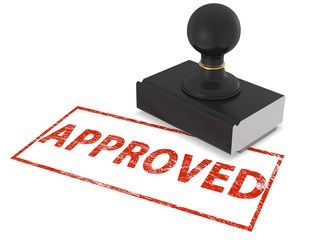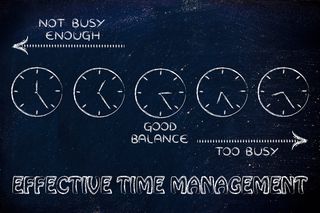The best way to illustrate the topic of this post is with the following joke:
A man is flying in a hot air balloon when he realizes he is lost. He reduces his altitude and spots a man in a field below. He lowers the balloon toward the man and shouts to him, “Excuse me, can you help me? I am late to meet a friend, but I don’t know where I am.”
The man below says, “I’m happy to help. You are in a hot air balloon, hovering approximately 30 feet above this field. You are between 40 and 42 degrees N. latitude, and between 58 and 60 degrees W. longitude.”
 After a brief pause, the balloonist declares: “You must be a lawyer.”
After a brief pause, the balloonist declares: “You must be a lawyer.”
“I am” replies the man. “How did you know?”
“Well,” says the balloonist, “everything you have told me I am sure is technically correct, but I have no idea what to make of your information, and the fact is I am still lost.”
The man below responds, “Indeed. And you … you must be a client.”
“Why, yes, I am,” replies the balloonist, “how in the world did you know?”
“Well,” says the man, “you don’t know where you are, or where you are going. You have made a promise that you have no idea how to keep, and you expect me to solve your problem. The fact is you are in the exact same position you were in before we met, but now it is somehow my fault.”
(From http://www.milwaukee-business-lawyer.com/my-favorite-lawyerclient-joke/)
Funny, right? But how true! Most of our clients and their families come to us for answers or solutions in the form of information, but sometimes the very information for which they pay us, and that they desperately need, is the source of much frustration and confusion for them. Why is that and what can you do to remedy the situation? One of the most common issues that may occur when relaying information to a client regarding a VA claim is giving too much or too little information. You can also have problems if you do not time the release of information correctly, or worse yet, give out the wrong information.
Some of this is undoubtedly beyond one’s control. For example, gauging the amount of information that your client is going to expect and want has a lot to do with that individual’s particular personality or social style. You can often tell from initial contact if your client or client’s family is going to participate actively in their planning and the application process versus how much they want you to just take care of everything and leave them out of it. Thus you may have to adjust your response and the amount of information you provide to meet individual needs on a client-to-client basis. As a good baseline, resist the urge to discuss how the sausage is made. I actually prefer clients who are engaged in the process and seek to comprehend the information they are given. Clients like this can be strong allies in the process of getting a VA claim completed and filed, as well as great referral sources because they appreciate how much work is entailed.
However, regardless of what the client may want, there is obviously a lawyer’s duty to the clients to keep them informed concerning their representation. Per the Preamble of the American Bar Association’s Model Rules of Professional Conduct, a lawyer's responsibilities include the following: “As advisor, a lawyer provides a client with an informed understanding of the client's legal rights and obligations and explains their practical implications. . . . As an evaluator, a lawyer acts by examining a client's legal affairs and reporting about them to the client or to others.” At the very least, someone in the family has to be made aware of the most basic information regarding the legal services you are performing for them: what you are doing, what is happening next, and what to do if circumstances change.
While you can’t always choose the personality of your client, factors like bad timing of information or giving out wrong information are largely ones that you should be able to control. By bad timing, I mean giving information when it is not required at that particular moment. This could be as simple as explaining the VA appeals process when you haven’t even filed an “Intent to file claim” form yet. It could also be giving necessary information too late to be of use. The best way to avoid either is to anchor back to your VA process and advise and inform your client at every major step as to what you have just done and what to expect next. Also systematize what information should be given at each stage using client handouts, correspondence templates, etc., so the client receives the information when needed and not afterwards. While there is no problem with giving the client an overall summary of the process, avoid giving too much information for future stages in the process that may in fact never occur.
The problem with giving a client the wrong information should be self-evident. The rules and laws impacting VA eligibility can be complex, but there is a wealth of resources online, including original sources like the Code of Federal Regulations and the VA Adjudication manuals, both of which are available at the VA’s Web Automated Reference Material System and which should be consulted regularly to ensure the accuracy of what you are telling your clients. Organizations like Lawyers with Purpose are also indispensable for the support they provide in the form of legal/technical learning opportunities and a network of colleagues facing the same challenges who are ready to answer your questions or act as a sounding board for your daily dilemmas. If you choose to make the time to use the resources available, you can ensure that you do not make the mistake of giving the wrong information.
Are you interested in learning more about the Lawyers With Purpose Estate Planning Trust Drafting Software? If so, click here and we'll hop on a call with you and show you how it works first hand! We think it's the best thing out there and are confident you will too after you see it for yourself. Click here now and we'll take it from there and start walking you through the difference it will make to your estate and/or elder law practice.
By Sabrina A. Scott, Paralegal, The Elder & Disability Law Firm of Victoria L. Collier, PC and Director of VA Services for Lawyers With Purpose.
Victoria L. Collier, Veteran of the United States Air Force, 1989-1995 and United States Army Reserves, 2001-2004. Victoria is a Certified Elder Law Attorney through the National Elder Law Foundation; Author of “47 Secret Veterans Benefits for Seniors”; Author of “Paying for Long Term Care: Financial Help for Wartime Veterans: The VA Aid & Attendance Benefit”; Founder of The Elder & Disability Law Firm of Victoria L. Collier, PC; Co-Founder of Lawyers with Purpose; and Co-Founder of Veterans Advocate Group of America.










